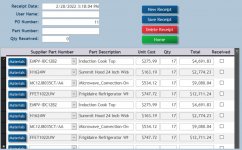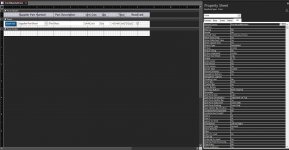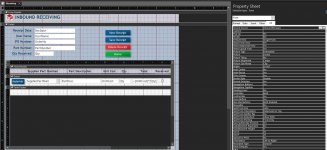riley23258
New member
- Local time
- Today, 06:20
- Joined
- Feb 28, 2022
- Messages
- 6
Hello, I'm building a tool for my company to use to track inbound receipts against purchase orders and materials. I have it in such as way where the form for receiving shows a subform, and when a PO# is entered, the subform will display all materails related to that purchase order. I want to be able to click a checkbox and have that "click event" update an Inbound Receipts table with the following: User Name, Supplier Part Number and Quantity. The Supplier Part Number and quantity are from the subform and the user name would then come from the base form. Is there VBA code that would allow this creation of a new record in the receipts table upon clicking the checkbox? (I've attached pictures of the form & subform)






